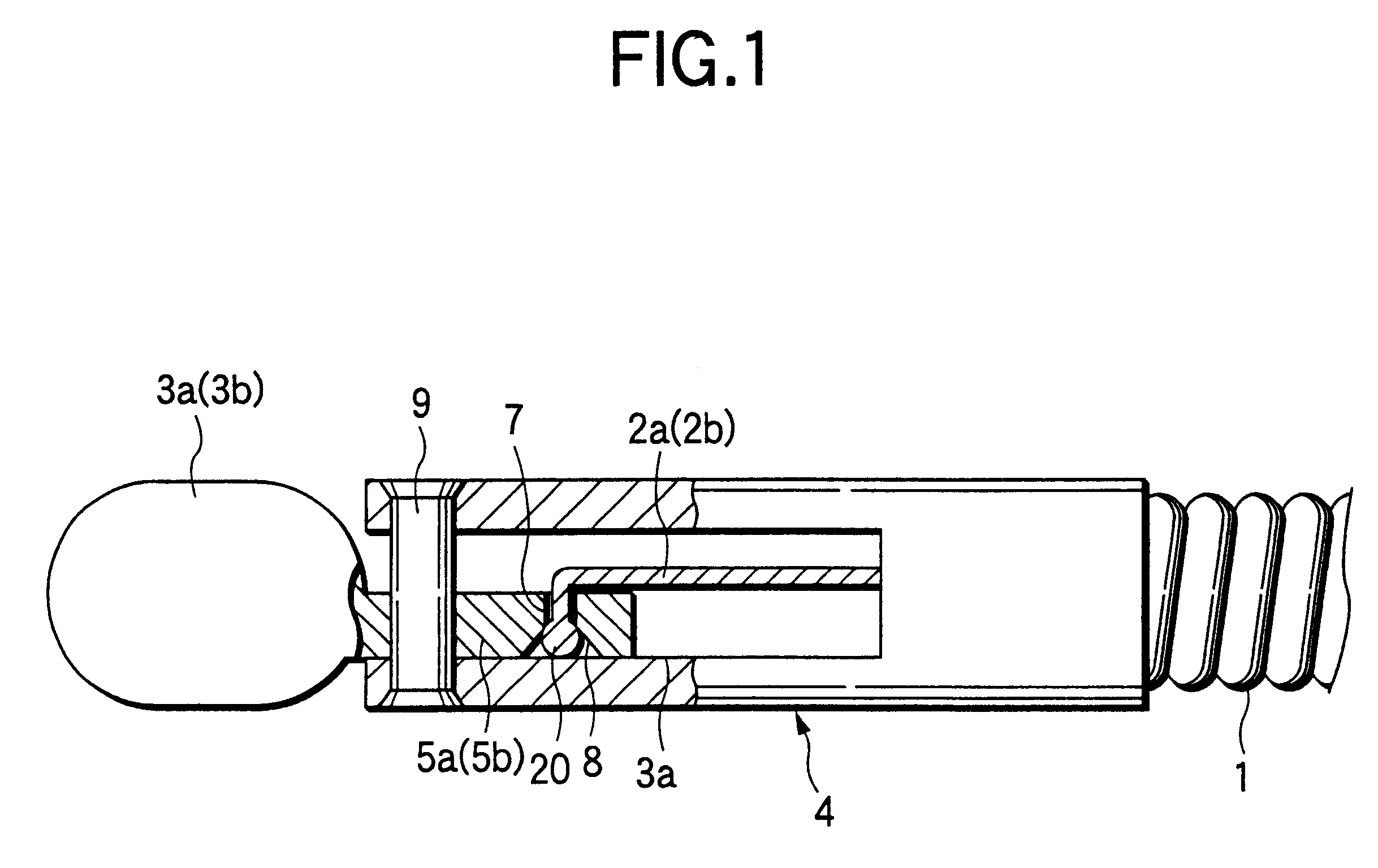Endoscopic treatment instrument
a technology of endoscopic treatment and endoscopic forceps, which is applied in the field of coupling portions of manipulating wires, can solve the problems of inability to implement both proposals, inability to meet the requirements of the patient, and the endoscopic treatment instruments such as the endoscopic forceps mentioned above suffer from a further problem, so as to achieve the effect of sufficient strength, high practical feasibility and no increase in the diameter of the sheath
- Summary
- Abstract
- Description
- Claims
- Application Information
AI Technical Summary
Benefits of technology
Problems solved by technology
Method used
Image
Examples
first embodiment
FIG. 6 shows the distal end portion of an endoscopic biopsy forceps according to a fifth example of the invention. The only difference from the fourth example is that the manipulating wire 2 consists of two wires 2a and 2b that are twisted together within the flexible sheath 1 in the neighborhood of its distal end and all the way backward as indicated by 20. That is, the two wires 2a and 2b are twisted together almost entirely from the support frame 4 to the manipulating section 10. This design brings about the same result as in the
In the fifth example, the pitch on which the two wires 2a and 2b are twisted together is smaller in the foremost end portion 21 of the twist area 20 than in the other areas, thereby allowing the two wires 2a and 2b in that foremost end portion to be bound more positively than in the other areas.
While the present invention has been described with reference to the foregoing fourth and fifth examples, it should be understood that the invention is applicable ...
seventh embodiment
FIG. 13 shows the distal end portion of an endoscopic biopsy forceps according to an eighth example of the invention. As in the seventh embodiment, the wire 2a, 2b extending from the sheath 1 is directed into the gap A between the skived surface of the drive lever 5a, 5b and the inner sidewall of the slit 41.
In the eighth example, each of the wires 2a and 2b passing through the gap A to be bent toward the small holes 6a and 6b is provided with a spherical stopper 2c (the large-diameter portion) at the tip so that those wires will not slip out of the small holes 6a and 6b. Even with this design, the present invention prevents the stopper 2c from bumping against the throat of the slit 41 and allows the forceps sections 3a and 3b to be opened and closed in positive movements.
FIG. 14 shows the distal end portion of an endoscopic biopsy forceps according to the ninth example of the invention. As in the seventh and eighth examples, the wire 2a, 2b extending from the sheath 1 is directed i...
PUM
 Login to View More
Login to View More Abstract
Description
Claims
Application Information
 Login to View More
Login to View More - R&D
- Intellectual Property
- Life Sciences
- Materials
- Tech Scout
- Unparalleled Data Quality
- Higher Quality Content
- 60% Fewer Hallucinations
Browse by: Latest US Patents, China's latest patents, Technical Efficacy Thesaurus, Application Domain, Technology Topic, Popular Technical Reports.
© 2025 PatSnap. All rights reserved.Legal|Privacy policy|Modern Slavery Act Transparency Statement|Sitemap|About US| Contact US: help@patsnap.com



